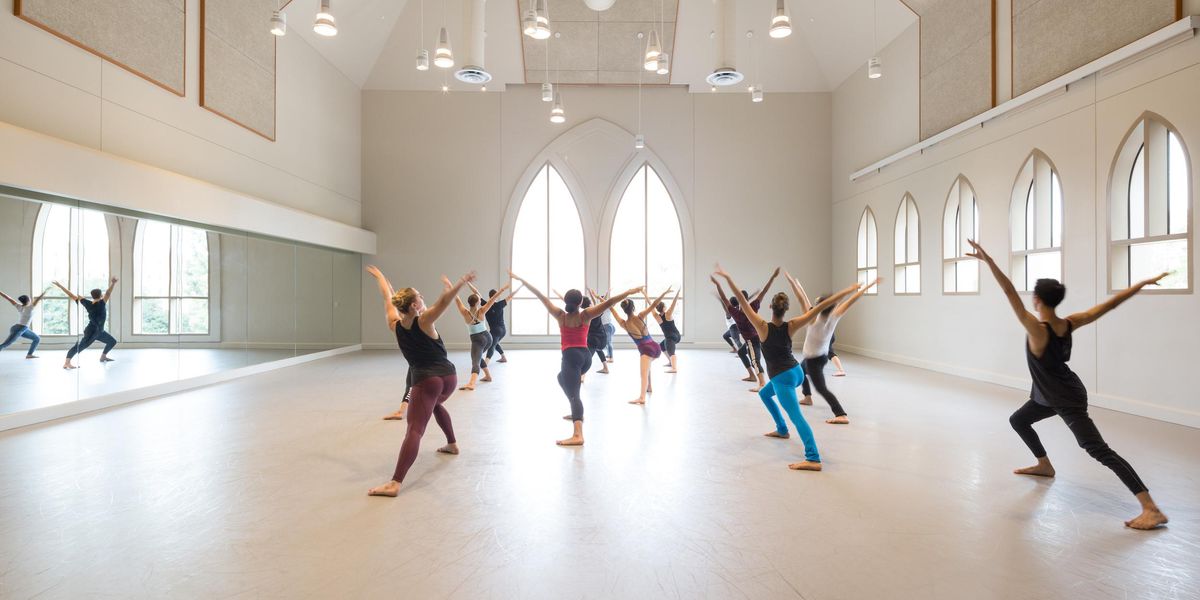Direct from the ImPulsTanz Festival in Vienna
Blogging from the ImPulsTanz festival in Vienna is similar to balancing your checkbook while running a steeplechase race. How do I find an internal coordination when the terrain is changing constantly? I am working as a danceWEB scholarship student within the frame of this five-week international festival of dance, performances and workshops with established dance artists. Every year, danceWEB selects 67 choreographers and dancers from around the world (danceWEBBERS) to come to Vienna, live together, trade dance philosophies, speak broken English, and misconstrue punch lines while trying to answer the enormous questions of: Where is Dance Going? This is a journey that is as much individual as it is collective—as evidenced by the first scholarship assignment: Break into small groups of six and develop a public service project (PSP) as a means to reflect on performance and the public imagination. What is a Public? What is Service? What is a Project? The answers to these questions have come in many forms. One group developed a circle-within-a-square or, squarecle, that is inscribed on the ground and becomes a place where anyone at the festival can come and enjoy a number of services—one of which is being alone after a long day of organized interaction.
It is already clear that a strong conceptual framework is integral to making headway in this situation. With so many voices in the room, creative interrogation becomes a new lingua franca, one that only produces more questions, one that drives each scholarship student into contact with the next, or in some cases divides us. The scholarship mentors, DD Dorvillier and Trajal Harrell, are less interested in consensus about what dance is, or even what movement is, and more interested in our work as individuals as we understand our choices as artists. DD and Trajal chose a group of students whose approach to dance is equal parts thinking, writing, and moving. Some have had no contemporary dance “training,” while others have worked with ballet companies, and still others arrived fresh from Anthropology or Visual Arts programs. If you were to sit in on some of the discussion taking place around the PSP you might think it was a workshop at a public policy school. This feels appropriate because dance constantly begs the question of its public, how to maintain, service or ignore the public’s needs. Although no clear conclusions were drawn, I found that constructing a real or imaginary public space was a useful tool in making room for the art, dancer or squarecle which goes there. None of us are the ideal dancer, there is no ideal dance, and these are concepts to investigate instead of ignore; there is artistic vitality inside of this realization. To this end, DD and Trajal have also proposed in their workshop to create a dance or a choreography without movement. One WEBBER responded with instructions: Close your eyes and imagine me walking across the room, turning left, turning right, flapping my arms, floating, collapsing and returning to my place in the circle. Was there movement in this choreography if it played out in the mind? Making an artistic choice about what a movement is or is not becomes crucial to what a dance may or may not be. This kind of choice can also determine who your audience will be. For example, another student proposed a juice container as a dance of condensed molecules. Yet another responded by saying that this juice container could be a sculpture whose subject is dance but is not itself a dance. Who would support this container as a dance? As movement? Who would deny this object’s right to be called a moving object? Could this container be a way to sell dance ideas in the art market and shift the status of dance’s economy?
Most of the courses I took during my first week here hinged on this question of taking the dancer outside the dance to look more intensely at the practice of dance, to unpack and redress ourselves with new information. One of the most successful investigations so far was the clothing exchange that took place at the Opening Party of the dance festival. Each scholarship student drew another’s name out of a bag and then dressed that person in items of clothing from his or her own wardrobe. The party was in a froth; techno music, the blues of Europe, throbbed throughout the hall, and the WEBBERS mounted the bleachers at one end of the hall and danced like rabid animals. Heads were wrapped in skirts, arms bound by rope, faces smeared with slapdash make-up. At this moment the party shifted from social event to performance (although it is hard to know when there ISN’T performance at a party full of dancers). Was it the bleachers that suddenly made it a performance? Or the organized action of a large group of people? Was it the sudden stillness of the non-costumed people as they watched as our costumes unravel into salty, sodden rags? The partygoers eventually unfroze and infiltrated our group, once, it seems, that they realized that the performer/public relationship is not a fixed identity. The hall then became a kaleidoscope of viewers and movers, crushed together. There is no absolute audience and no absolute movement. There is always, however, further articulation. —Will Rawls




